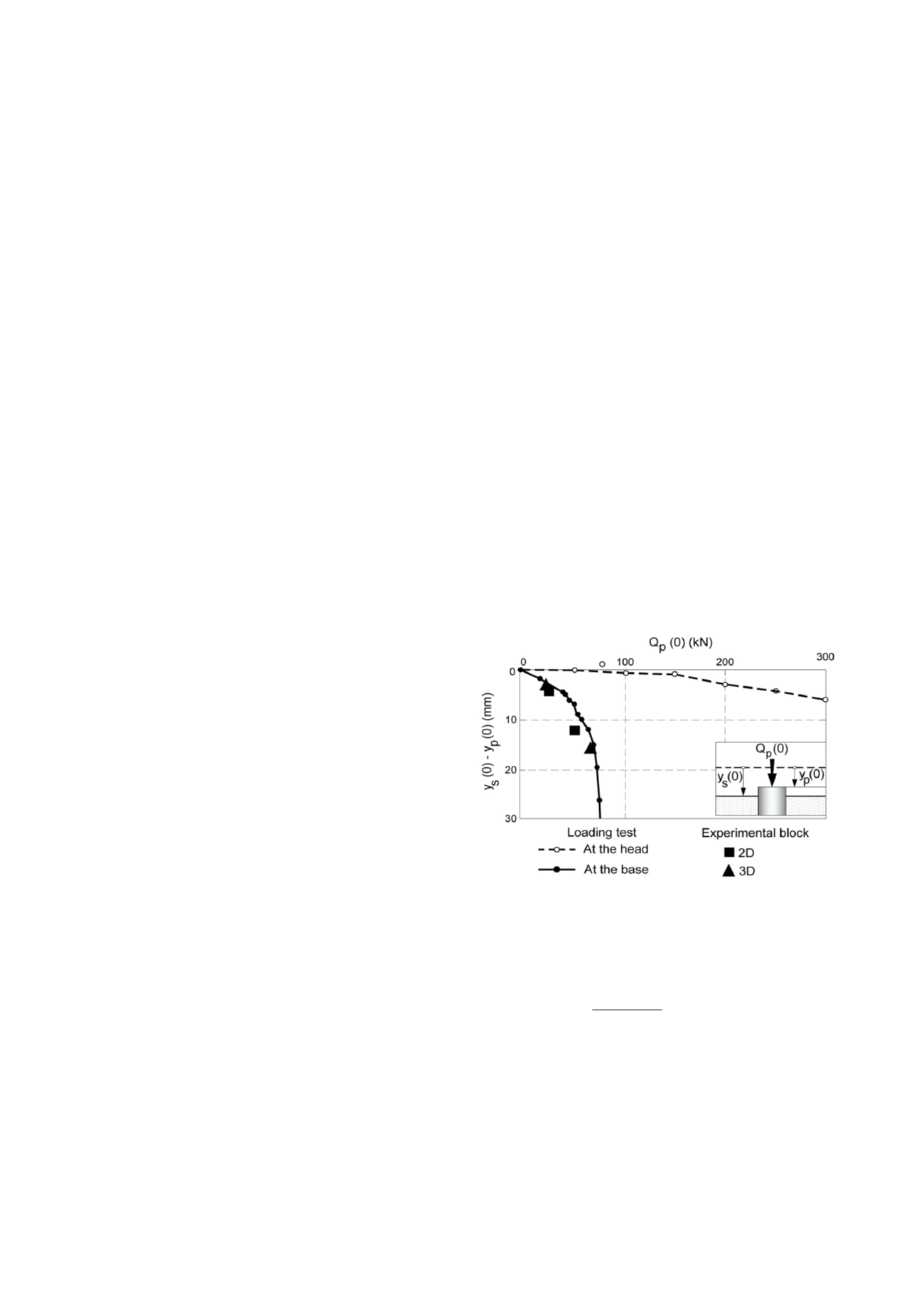

Proceedings of the 18
th
International Conference on Soil Mechanics and Geotechnical Engineering, Paris 2013, volume 6, 2016
a) Compensate for the lack of experimental reference data
and rely on specific developments inventoried in France in favor
of foundations with large surface areas.
b) Better understand the load transfer mechanisms occurring
in the distribution mattress placed at the base of an embankment
on rigid inclusions or else under an extended foundation like a
slab or raft.
c) Devise a set of design methods, which entails generating
detailed numerical reference models and building simplified
methods for application to typical structures.
d) Create a comprehensive model that encompasses both the
mattress and the reinforced soil, in which the soil bears a portion
of the load.
e) Evaluate the effects of hard points in the case of slabs, and
develop the ability to assess the bending loads in such slabs.
f) Accompany advances in the technique by establishing
recommendations for the design, execution and control of
reinforcement works using rigid inclusions.
This project's managerial team consisted of a President, a
Vice President, a Scientific Director and a Head of Monitoring
appointed by IREX.
The ASIRI Project featured 40 partners split between the
construction industry and academia. Its budget was €2,389,280,
including a DRAST Agency subsidy totaling €478,000, with the
balance provided by partners' dues and in-kind contributions.
The project was scheduled to last 5 years, from 2005 to 2010.
7.2
Overall study program
The ASIRI Project ran from 2005 to 2011 and comprised 5
topics:
1) Full-scale experiments on an embankment or slab installed
on rigid inclusions;
2) Instrumentation of actual structures built under a wide range
of geotechnical conditions;
3) Physical models in either the centrifuge or calibration
chamber;
4) Complete characterization of the mechanical behavior of
coarse materials used in the distribution mattress of experimental
structures or physical models;
5) Reference numerical models.
In conjunction with these topics, a set of detailed
Recommendations containing 8 chapters was written between
2005 and 2011. This ambitious program served as the support
for 9 doctoral theses. Let's also note that the Project was
deliberately focused on key technical and design points, making
it necessary to overlook a number of equally important points,
such as the lateral loading of foundations and cyclic loadings.
7.2.1
Experimental structures
7.2.1.1
Detailed description
Two sites, one in Saint-Ouen-l'Aumône the other in Chelles,
were used to conduct two full-scale experiments aimed at
structures built on rigid inclusions, i.e.: an embankment, and
slabs bearing a distributed load.
Each of these structures contained a non-reinforced block,
offering a reference and laying the groundwork for loading tests
on isolated inclusions. This set-up allowed determining
technique efficiency in terms of stress and settlement. Moreover,
comparisons could be drawn with the behavior exhibited by
inclusions installed both with and without soil displacement.
Geotechnical surveys were carried out using cored borehole,
in situ
testing and laboratory tests. The mattress material
(industrial gravel) became the focus of 300-mm diameter triaxial
tests, which led to compiling a reference database for gravelly
materials.
Each reinforced block contained 16 inclusions, thus yielding
a perfectly centered mesh representative of conditions relative to
the straight section of a structure, notably one without edge
effects.
A very thorough instrumentation set-up enabled measuring
the forces generated on the inclusion heads and between
inclusions, as well as settlements at both the inclusion heads and
the top of the distribution mattress. Multi-point settlement
gauges had been positioned along the thickness of the
compressible soil, with inclinometers also installed beneath the
embankments. Transducers offering precision to within 1 cm had
likewise been placed in the measurement plane. Lastly, the
bundles of geosynthetic reinforcements implemented under the
embankments had been instrumented by optical fibers.
7.2.1.2
Main lessons drawn
The two full-scale experiments provided considerable extra
knowledge of the behavior and mechanism involved in the rigid
inclusion technique. Among the general or more specific points
identified, the following remarks are noteworthy:
a) The sizable reduction in settlements of structures on the
rigid inclusions, compared to the non-reinforced soil case (by a
factor of 5 to 6), has been confirmed.
b) Between inclusion heads, the deflected soil shape turns out
to be flat; in addition, confirmation is provided that settlement
efficiency always remains higher than stress efficiency.
c) At the base of an embankment built on a reinforced soil
block by means of rigid inclusions, a distribution layer or high-
quality mattress plays a determinant role in effectively
transferring load between the embankment and the inclusions.
e) A reinforcing geogrid placed in the distribution layer offers
better efficiency than a geotextile bundle. The strains
experienced during installation and compaction of this layer
appear to play a determinant role (as highlighted by the optical
fibers). A distribution mattress reinforced by two geogrids
exhibited practically the same behavior as a reinforced slab lying
on the inclusion heads.
Fig. 16: St Ouen-l'Aumône (slab block) - Comparison between
experimental block loading and the loading test of a micropile,
with measurements at both the top and tip
f) The behavior observed at the head of an inclusion with an
ordinary block mesh is identical to that at the tip of an isolated
inclusion loaded axially at the head, as shown in Figure 16,
which constitutes a major result and demonstrates that overall
positive and negative lateral friction effects balance one another.
Yet this finding must only be considered valid if the inclusions
are lying on a resistant substratum layer. It is important therefore
to be able to accurately model the behavior of an inclusion tip, so
as to ensure reliable representation of the complete numerical
model. This result led to imposing the preliminary calibration of
numerical models through simulating, in the prepared model, the
behavior of an isolated inclusion subjected to axial loading. Such
a protocol serves to compare the responses obtained to either the
outcome of a specific test or the results of a semi-empirical
simulation via transfer curves recognized as representative. This
Volume 6 - Page 87









